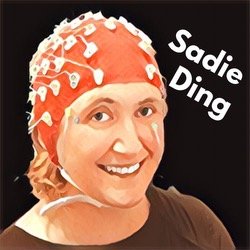SDAM and Big Picture Thinking
SDAM researcher Brian Levine told me that SDAM (severely deficient autobiographical memory) isn’t just a deficit. It has advantages and disadvantages. This is also true for HSAM (Highly Superior Autobiographical Memory.)
This is because the brain is all about trade-offs. Neurotypical people strike a balance between episodic and semantic memory — remembering details and context, and picking up more general trends and regularities in the data. People with HSAM put (almost) all their marbles on the episodic side of the scale, while people with SDAM put (almost) all of ours in the semantic bucket.
Specifically, people with HSAM remember a huge number of their life events in great detail. They can recall, for instance, not only the day of the week that they sprained their ankle — they recall all sorts of incidental details, like the weather that day, what they were wearing, what time of day it happened, and exactly what people said.
This is certainly impressive, but it comes with a distinct disadvantage: Their excellent memory for events (aka autobiographical or episodic memory) can make it hard for them to notice big-picture trends in their life. For instance, while they can give you a detailed list of every time they ever injured themselves, they may fail to notice that they tend to get in a lot of scrapes — more than most people — and perhaps there’s something wrong with their vision.
Those of us with SDAM, on the other hand, won’t remember all the times we sprained our ankles, but we will pluck an overarching truth from all those experiences: That we are klutzy. This is because we lean heavily towards semantic memory as opposed to episodic memory. It’s specifically our tendency to gloss over what I’d call irrelevant details that allows us to comprehend the big picture.
Another example: If I go see a movie with my HSAM friend Melissa, she is going to remember the names of the characters, perhaps some individual items of clothing, every significant plot point and the sequence of events. I, on the other hand, won’t recall any of that, but I WILL have some big ideas — maybe I’ll notice a motif of falling water, and how the presence of waterfalls (and even flowing sand) signals an impending change in the main characters’ circumstances.
As a result, Melissa and I together were a KILLER team, in our college Japanese cinema class. I’d have a vague ideas for a thesis, and she’d be like, “Yes!” and could fill in all the supporting details.
Here’s some research on the benefit of forgetting details in humans, and here’s one in rats. In the rat study the researchers chemically blocked the natural process of forgetting, and it made it impossible for the rats to generalize information to new situations. Specifically, rats who got shocked in a particular box and who remembered all the context of the experience were not afraid when they saw a similar looking box in a different context.
Here’s another interesting paper that lays out the whole “tradeoff” hypothesis and provides supporting evidence.
Q for my fellow SDAMers: Do you excel at big-picture thinking?
